|
McCloud River Railroad Company Locomotive #28 Baldwin DRS-6-6-1500 Built- 1948 c/n- 73653 Horsepower- 1500 |
|
|
| The McCloud River Railroad reportedly placed an order with Baldwin for a road switcher at or possibly even before Baldwin's demonstrator #1501 spent some time on the line in the summer of 1948. The railroad had studied diesels at some length before firming up the order, evaluating among other options using combinations of smaller 70- or 90-ton industrial switchers, which the company discarded in favor of having all the power in one locomotive that would reduce crew and maintenance costs. The standard DRS-6-6-1500 at the time weighed 325,000 pounds, but Baldwin built the #28 at a special reduced weight of 280,000 pounds in light of the 50-pound rails still in use on some spurs and sidings. In the spring of 1950 the president of the Sierra Railroad wrote McCloud's president P.N. Myers seeking information on McCloud's experience with the #28; Myers provided a glowing report of the unit's performance, stating "...the 6-motor 1500 h.p. will do over twice as much work as one of our steam Mikados, and by using the diesel we have been able to eliminate helper service almost entirely on the line for which the No. 28 was purchased, that is between Mt. Shasta and McCloud.". Myers further went on to state "On 60# rail the engine has done all right, but we do have to watch the gauge carefully, because the 13-foot rigid wheelbase tends to push out the rails if they are not secure and in to standard gauge." All told the railroad figured the #28 through 1949 cost the company $50,907.36, whereas the cost would have been $85,358.85 to do the same work with steam locomotives, which represented a savings of $34,451.49. |
|
|
 |
| The locomotive tonnage rating chart from the railroad's employee timetable #64 issued 10 July 1949 clearly shows how the #28 stacks up against steam power and together with the economics goes a long way towards explaining the rapid shift from steam to diesel electric locomotive technology. |
|
|
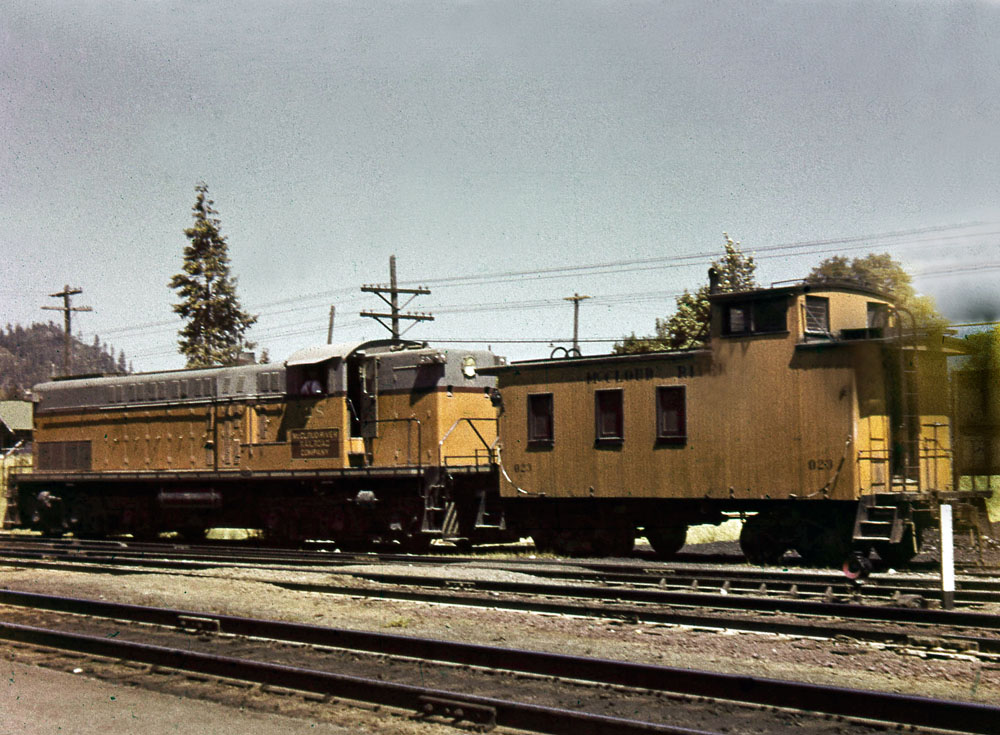 |
| William Wherry caught this image of the almost brand new #28 at the bottom end of the Mt. Shasta City yards in the summer of 1949. The unit brought the day's outbound loads over the hill from McCloud and is now waiting for Southern Pacific to finish its switching chores before it will start back for McCloud with the inbound train. Charlie Wherry collection. |
|
|
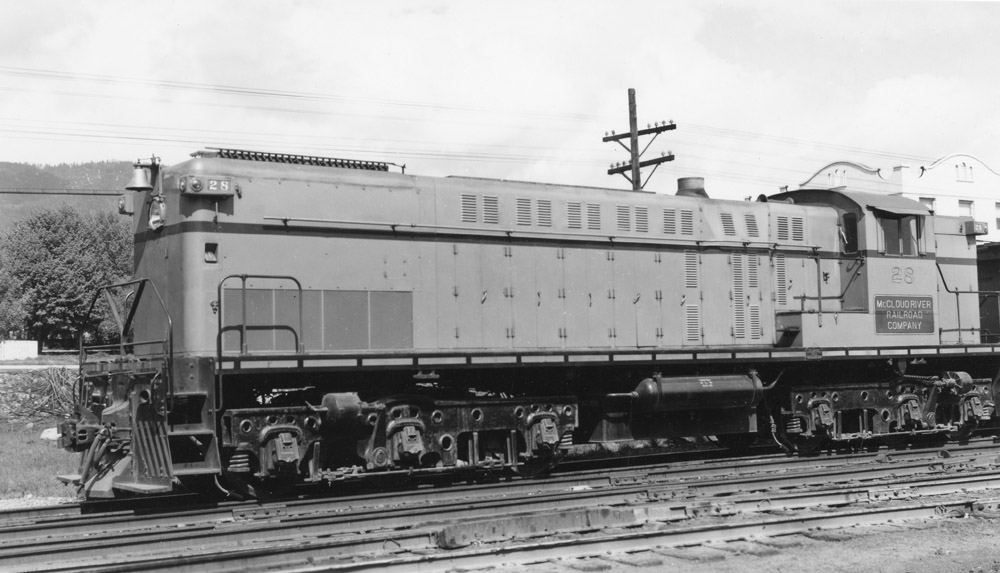 |
| Another shot of the #28 in Mt. Shasta City when nearly new. Jeff Moore collection. |
|
|
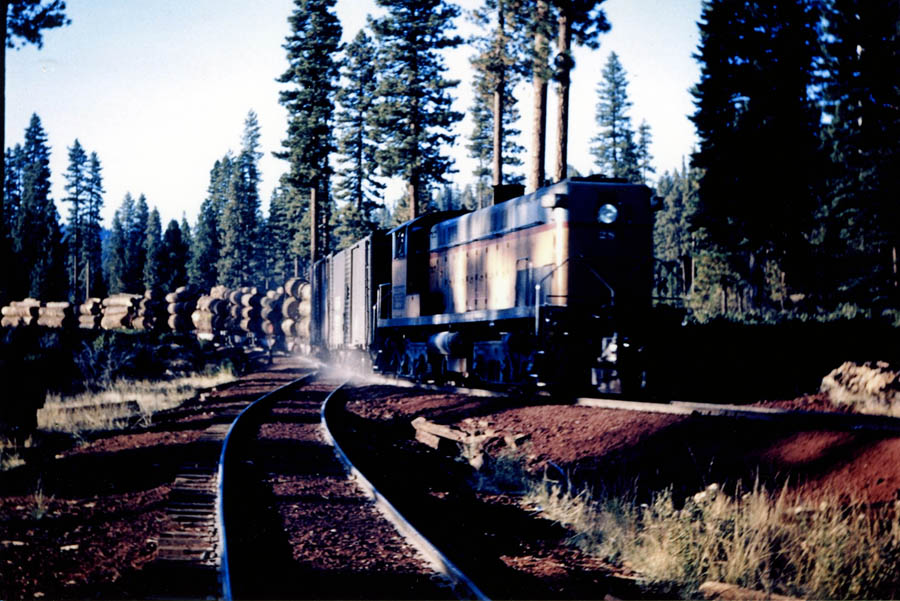 |
| The #28 leading a mixed train of lumber and log loads, probably returning from Pondosa and most likely at Car A. Travis Berryman collection. |
|
|
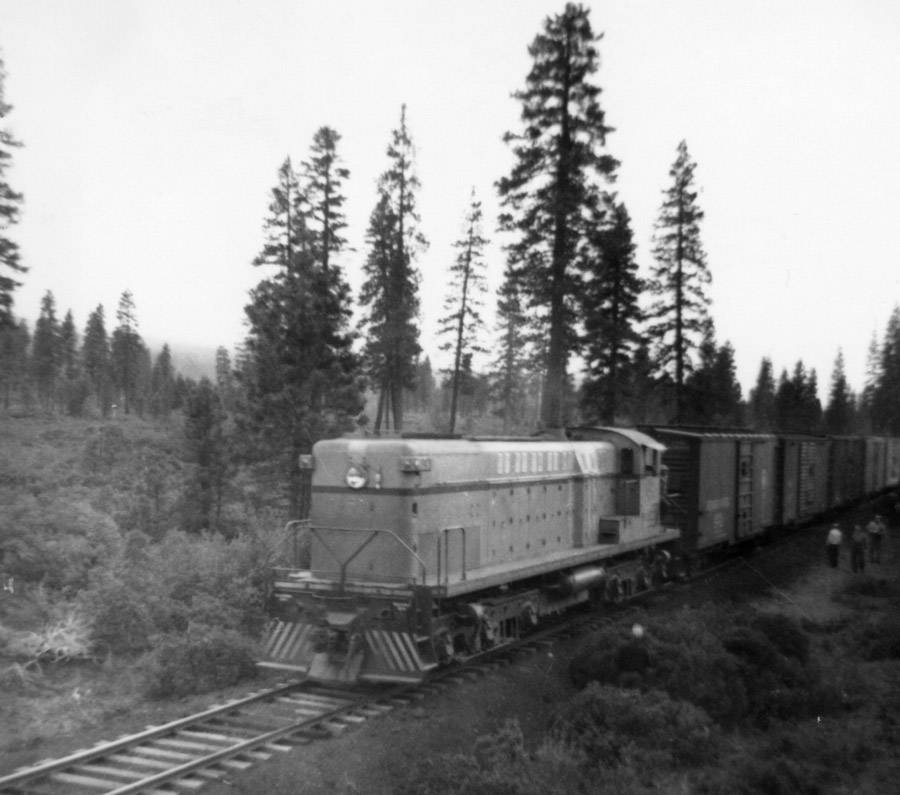 |
| The #28 powering a Lookout bound freight past an excursion train at Camp No. 2 siding in June 1950. |
|
|
 |
| The #28 with caboose #029 in the Mt. Shasta City yards. Unknown photographer, Brett Gibson collection. |
|
|
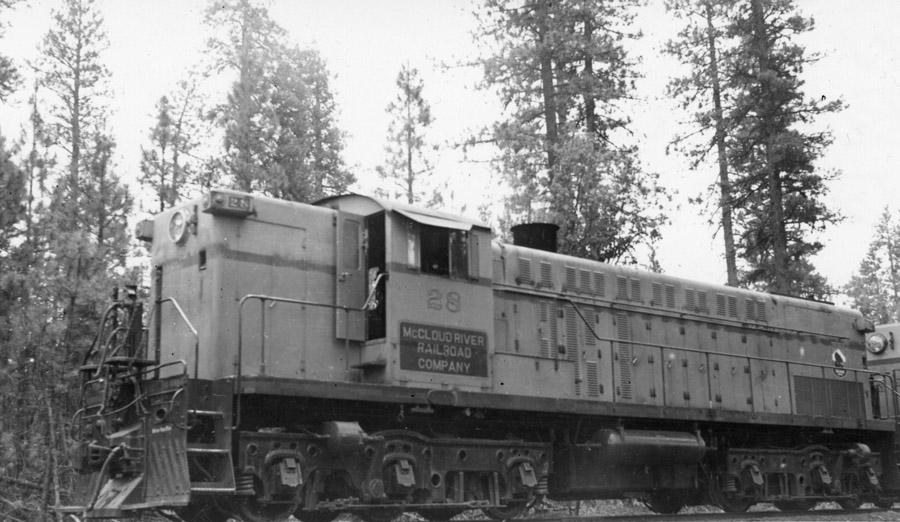 |
| The #28 on the Gold Spike Special on 3 July 1955. The steps, hoses, and connections evident on the ends of the locomotive are the obvious manifestations of the addition of the multiple unit controls and capabilities. |
|
|
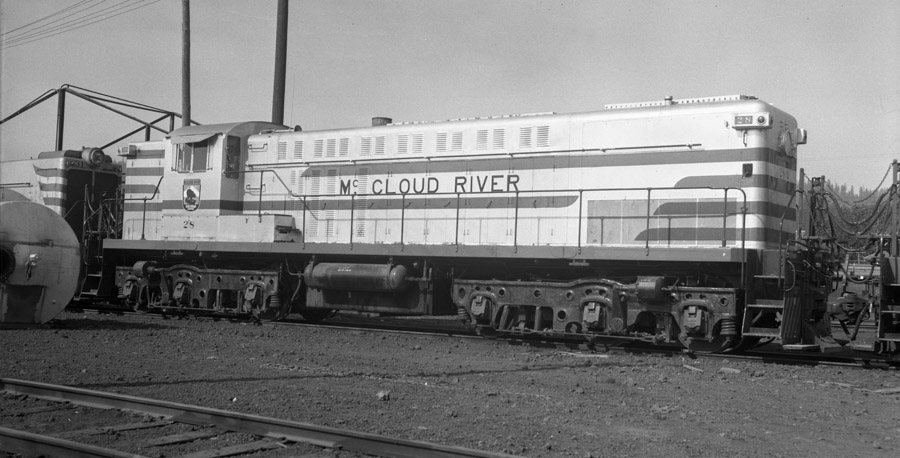 |
| The #28 sitting in front of the McCloud shop on 31 August 1957. By this point the locomotive is wearing the new silver with red stripes paint job that it would wear for the rest of its career on the McCloud. Photo is by and courtesy of Jerry Lamper. |
|
|
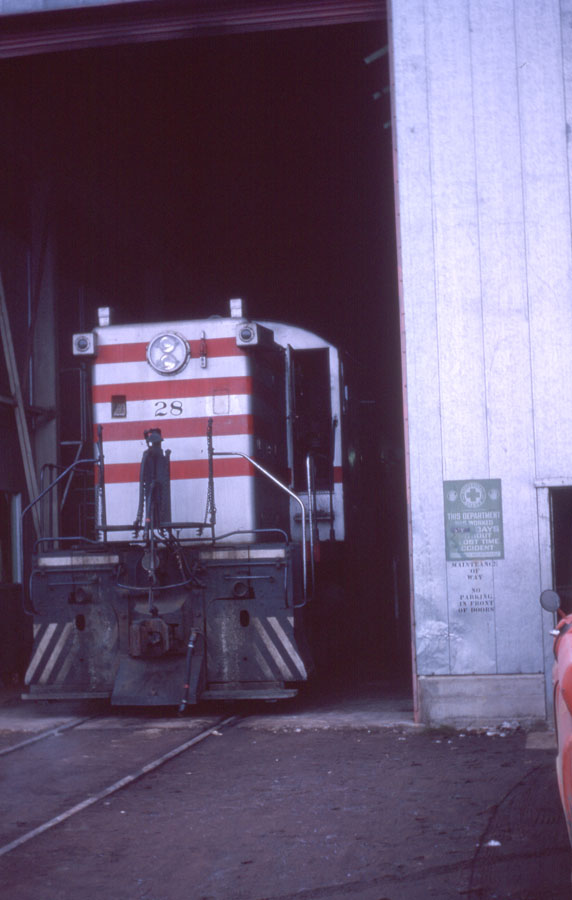 |
| #28 in the shop in the early 1960s. |
|
|
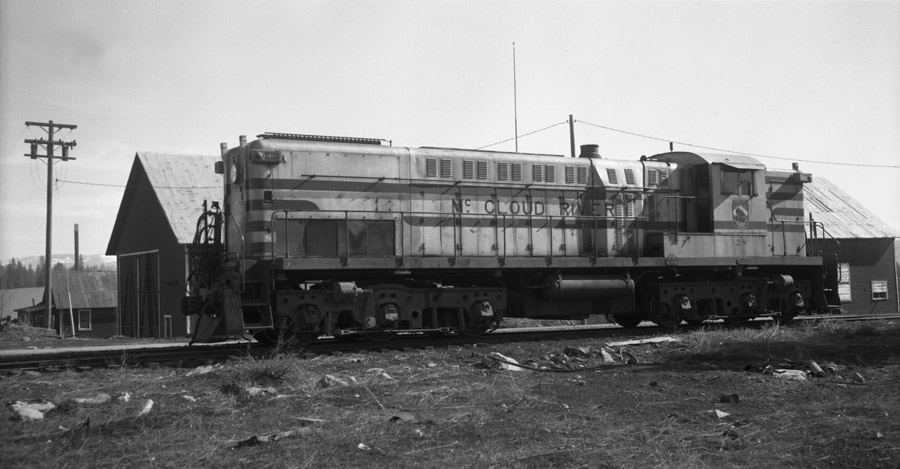 |
| The #28 at rest in McCloud in 1966. |
|
|
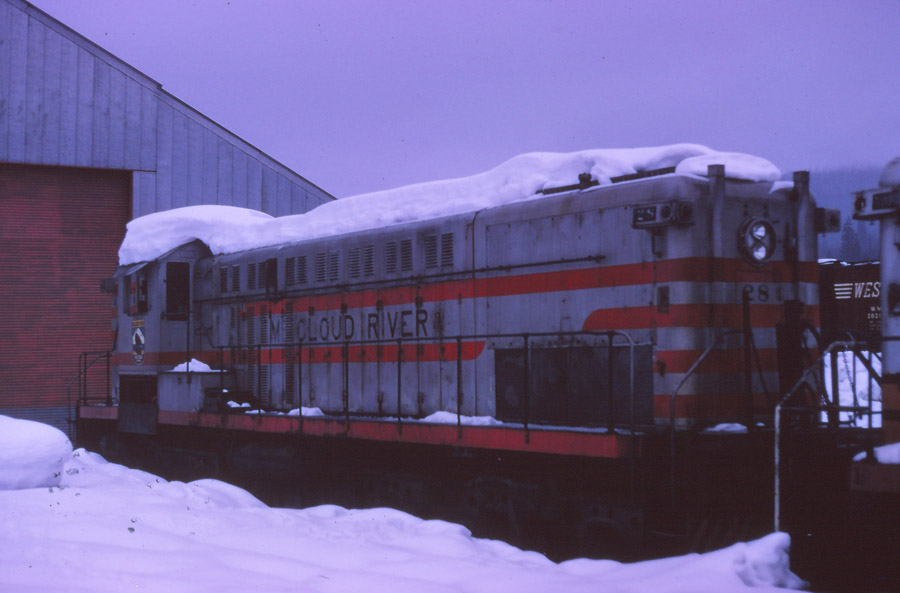 |
| By 25 January 1969 the #28 had been parked behind the shop and reduced to serving as a parts source to keep the rest of the Baldwin fleet running. Lee F. Hower photograph. |
|
|
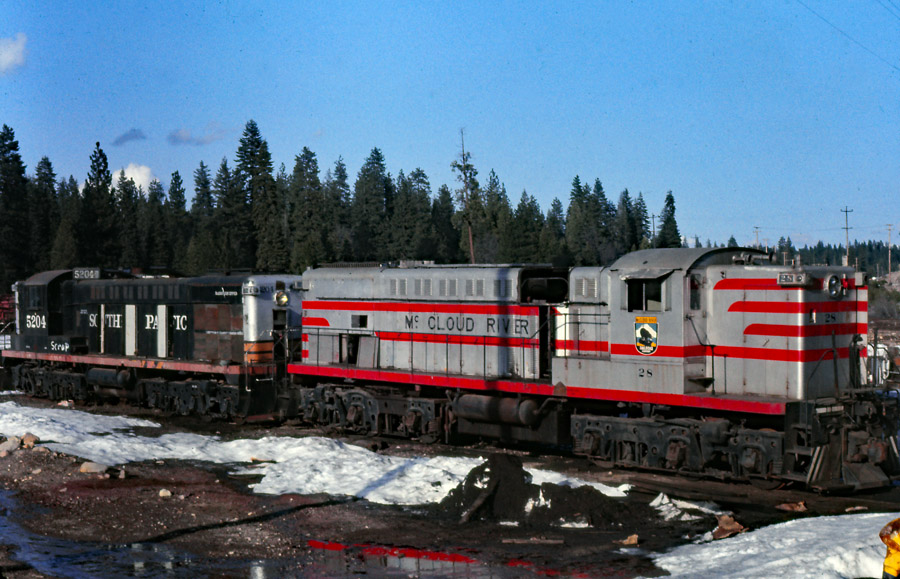 |
| Another shot of the #28 and the #36:1 behind the shop, this one taken 31 March 1969. Lee F. Hower photograph. |
|
|